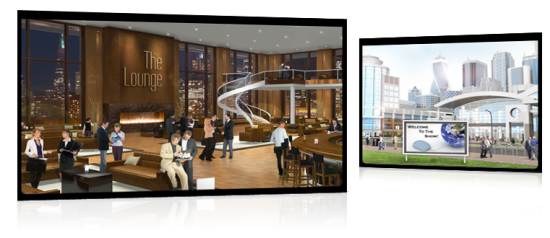
Coming into this year, I considered 2009 a taking-off point for the virtual events industry. Sure, virtual events and virtual tradeshows have been around for some time, but I felt 2009 would see enormous growth (in both event volume and in the breadth of industries entering the mix), as virtual event organizers (and virtual event platform providers) pushed the envelope with new technologies and new event models.
From my perspective, this has come to fruition – 2009 has had so much activity and excitement that I’ve decided to publish my year in review before the summer is out! And maybe I should re-label this – I don’t intend to provide a review of the entire year – but rather, highlight the important trends that I’ve noticed in 2009:
Virtual events go global
Since I reside in the United States, it’s not surprising that many virtual events I hear about are produced by U.S.-based show hosts (e.g. b-to-b publishers, corporations, etc. based here). In 2009, I saw a marked increase in virtual events outside of the U.S. – including those for a global audience and those targeting a specific geography. I saw a few “24 hour consecutive†virtual events that sought to follow the sun. I saw the launch of ExpoNZ (a global showcase for New Zealand) and virtual job fairs in Europe, powered by IMASTE. I expect to see this trend continue into 2010.
Many new industries come on board
Pior to 2009, b-to-b publishers and technology vendors took up the lion’s share of virtual events. That’s no longer the case now. In my Virtual Events Calendar, you’ll see events from the following industries: pharmaceutical, packaging, consumer goods, mortgage, travel, healthcare, retail, textile. I’m sure there were other industries (not listed here) that saw their first virtual event in 2009 (e.g. auto, financial). Expect this trend to continue as well – in 2010, additional industries will surely enter the mix.
The emergence of hybrid events
It’s only logical to complement your physical event with a virtual component. In the technology space, SAP and Cisco ran virtual events concurrent with their annual customer conferences. In the minds of the virtual events industry, this trend is quite clear, as more and more physical events will be expected to have a virtual component. I haven’t yet seen a scenario whereby a physical event was produced to complement an existing virtual event – so perhaps that’s a trend to come in 2010.
The shift from event to ongoing community
The use of live show dates will continue with virtual events – but increasingly, show hosts are looking to take the audience generated for the event – and support post-event continuation, in the form of an ongoing community. Virtual events are shifting from a single (or multi) day focus – to one of a 365 day/year community, sprinkled in with pre-scheduled live dates throughout the year. Working hand-in-hand here is another important 2009 trend – the integration of social networks into virtual events. Jeremiah Owyang had a very interesting blog posting on this topic.
The shift from single-day to multi-day events
Prior to 2009, the typical virtual event ran during the business hours of the show host’s local timezone (e.g. 9AM to 6PM ET). In 2009, we witnessed some 24-hour consecutive virtual events, along with an increasing number of events that ran for 2 consecutive days or more. Part of the multi-day trend runs in parallel with the hybrid event trend – for physical events that run multi-day, it’s only natural that a virtual event also span more than one day.
(This article first appeared on Dennis Shiao’s blog It’s All Virtual.)
- Mobile revolution arrives for virtual events - May 4, 2011
- Six tips for selling virtual event sponsorships - March 25, 2011
- Generate Sales Leads With Virtual Events - December 14, 2010
